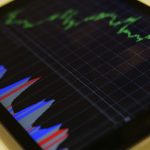Photo by Cindy Ord/Getty Images for Robinhood
- Goldman Sachs downgraded Robinhood to a sell rating nearly three weeks before the trading app announced a plan to lay off workers.
- The investment bank highlighted three areas of concern surrounding the platform used by many young retail investors.
- Robinhood reports first-quarter results after the close Thursday.
Robinhood’s plan to let go of about 9% of its workforce underscored a slowdown at the retail investing platform that Goldman Sachs noted earlier this month in a note downgrading the stock.
The issues Goldman raised weeks ago have gained more salience as Robinhood is due to release first-quarter financial results late Thursday, on the heels of its plan to cut more than 300 workers. The announcement from CEO Vlad Tenev spurred a stock selloff Wednesday that ended with the lowest closing price since the company went public in July 2021.
“We believe softening retail engagement levels (particularly among the low-end consumer), continued weakness in account growth, and a limited path to near term profitability are likely to limit outperformance over the next twelve months,” Goldman Sachs analyst Will Nance wrote in an April 8 research note downgrading Robinhood to a sell rating from neutral, with a 12-month price target of $13.
The trading app at the center of last year’s meme-stock rally featuring GameStop and AMC is expected to post a narrower loss of $0.38 a share on a 32% revenue decline to $355 million. Investors will also watch for its update on monthly active users, a metric that fell 8% sequentially in the fourth quarter to 17.3 million.
Here are three issues of concern about Robinhood outlined by Goldman’s Nance earlier this month:
1) Unlikely to reach profitability in 2023 given recent growth trends
Robinhood had adjusted EBITDA margins of 2% in 2021 and forecast 15% to 20% growth in adjusted expenses in 2022. Goldman estimated the company needs to see revenue growth of about 30%, or a 14% compound annual growth rate off of its fourth-quarter annualized runrate, “which we believe is a relatively high bar given recent account growth trends,” the investment bank said. “With the Street currently forecasting Adjusted EBITDA margins around 5% in 2023, we believe a resetting in expectations could lead to underperformance.”
2) Pressure on low-end consumers could lead to underperformance versus other brokers
Goldman said Robinhood’s trading results have underperformed brokerage peers for two quarters as it believes a large percentage of users added in 2021 were younger, less affluent and newer to investing than customers at rival platforms. The investment bank sees benefits from pandemic-era checks sent to millions of Americans waning, while higher gas prices and inflation are working through the economy. As such, “we believe HOOD could continue to see higher levels of churn as these investors leverage their smaller dollar account sizes for everyday spend.”
3) Limited valuation support given profitability profile
Robinhood’s market capitalization has since declined to nearly $9 billion from about $11 billion at the time Goldman released its research note. It had said with a market cap of around $11 billion, or about four times its 2023 revenue forecast, valuation appeared inexpensive on traditional metrics.
“That said, the lack of a clear path towards profitability in an environment that is increasingly skeptical of valuing unprofitable fintech on a revenue multiple basis limits the path for a near term re-rating, in our view,” said Nance.
Robinhood shares were nearly 1% higher at $9.59 on Thursday. The stock has dropped roughly 17% so far this year.
Powered by WPeMatico






